by Martin Green
Platinum has always been a bit of a mythical metal, especially in the world of watchmaking.
Only the most expensive, and often also the most complicated, watches are fitted with platinum cases crafted from this white metal. Because of their price tags, they have remained rare. And because platinum watches are rare, they retain that same price tag.
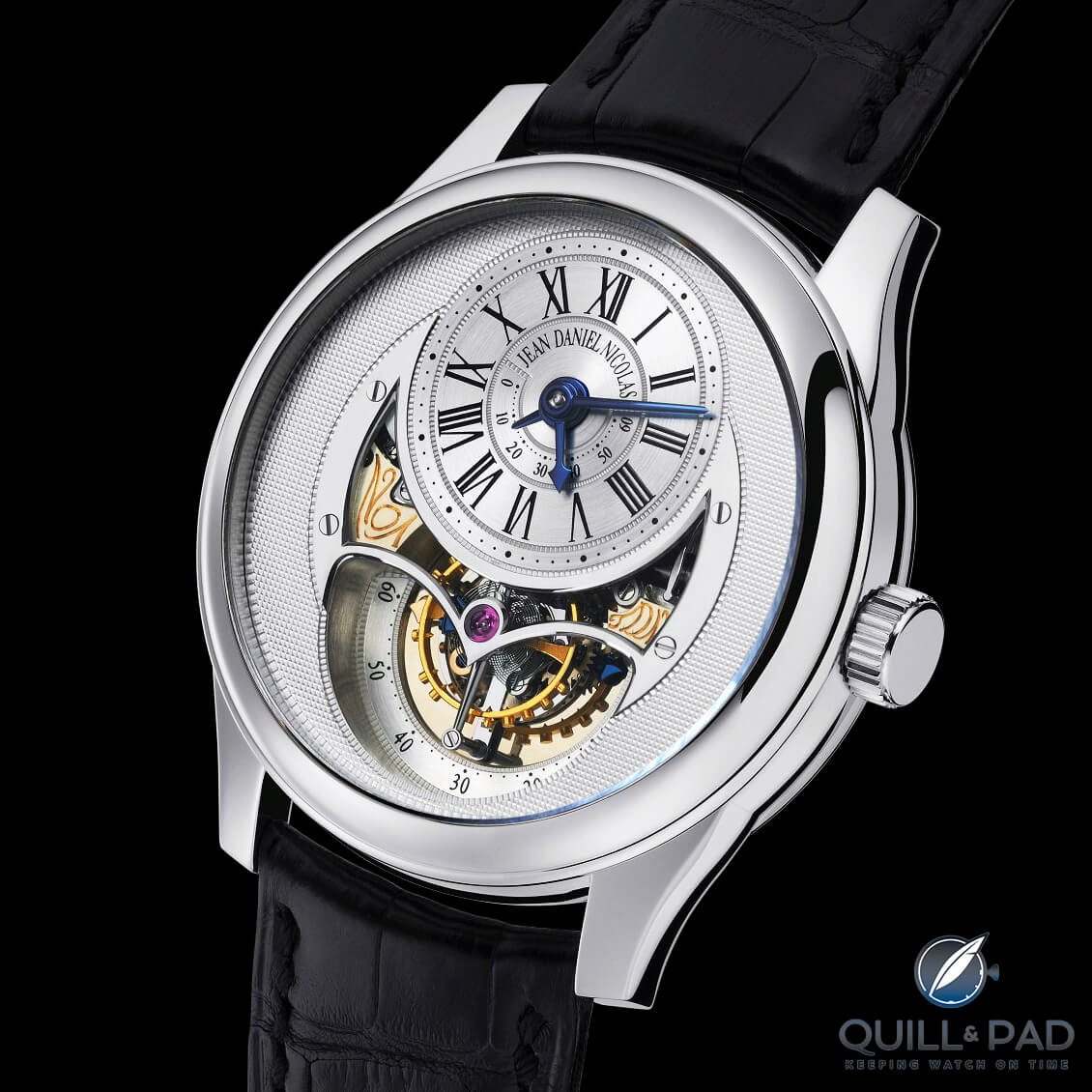
Jean Daniel Nicolas Two-Minute Tourbillon by Daniel Roth in platinum (photo courtesy Guy Lucas de Peslouan)
Many watch brands position their platinum models as the nec plus ultra, reserved for only the finest watches.
Or so the story goes.
Many arguments are used to justify the steep price tags that come with platinum watches, and it is not uncommon that these are significantly more expensive than the same model offered in 18-karat gold.
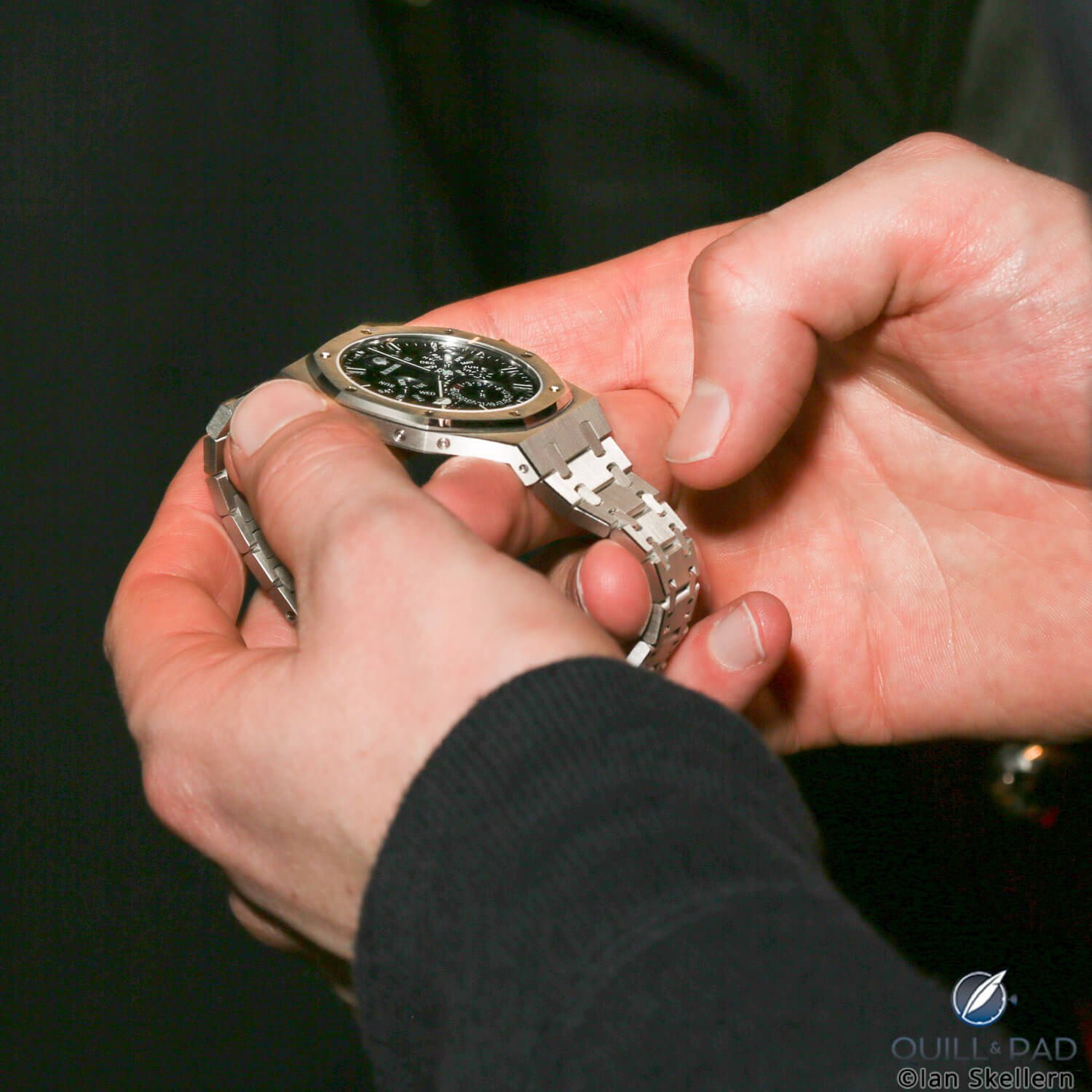
The Audemars Piguet RD#2 ultra-thin perpetual calendar in platinum introduced at SIHH 2018
While platinum does indeed have some unique qualities, marketing has given birth to some myths regarding this material that may sound great, but are not always completely true.
Platinum is rare
Everything is relative, and platinum is only relatively rare.
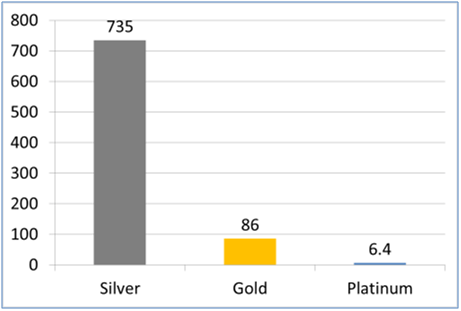
Platinum is genuinely rare compared to silver and gold
How relatively? For this, I refer to the recent article Here’s Why: Stainless Steel Is The Most Precious Metal by my esteemed colleague Joshua Munchow, who points out that 150 tons of platinum are produced yearly, the vast majority of which is used in vehicle emissions control devices, aka catalytic converters. That 150 tons is less than 10 percent (7.4 percent) of the production of gold.
About 25 percent of the annual platinum production finds its way into jewelry, where it is an especially popular material for rings. Yet even if this percentage of the yearly platinum production were to be used for crafting watches, and we use the high estimate of around 90 grams per case that Joshua established, 412,500 platinum watch cases per year could still be made.
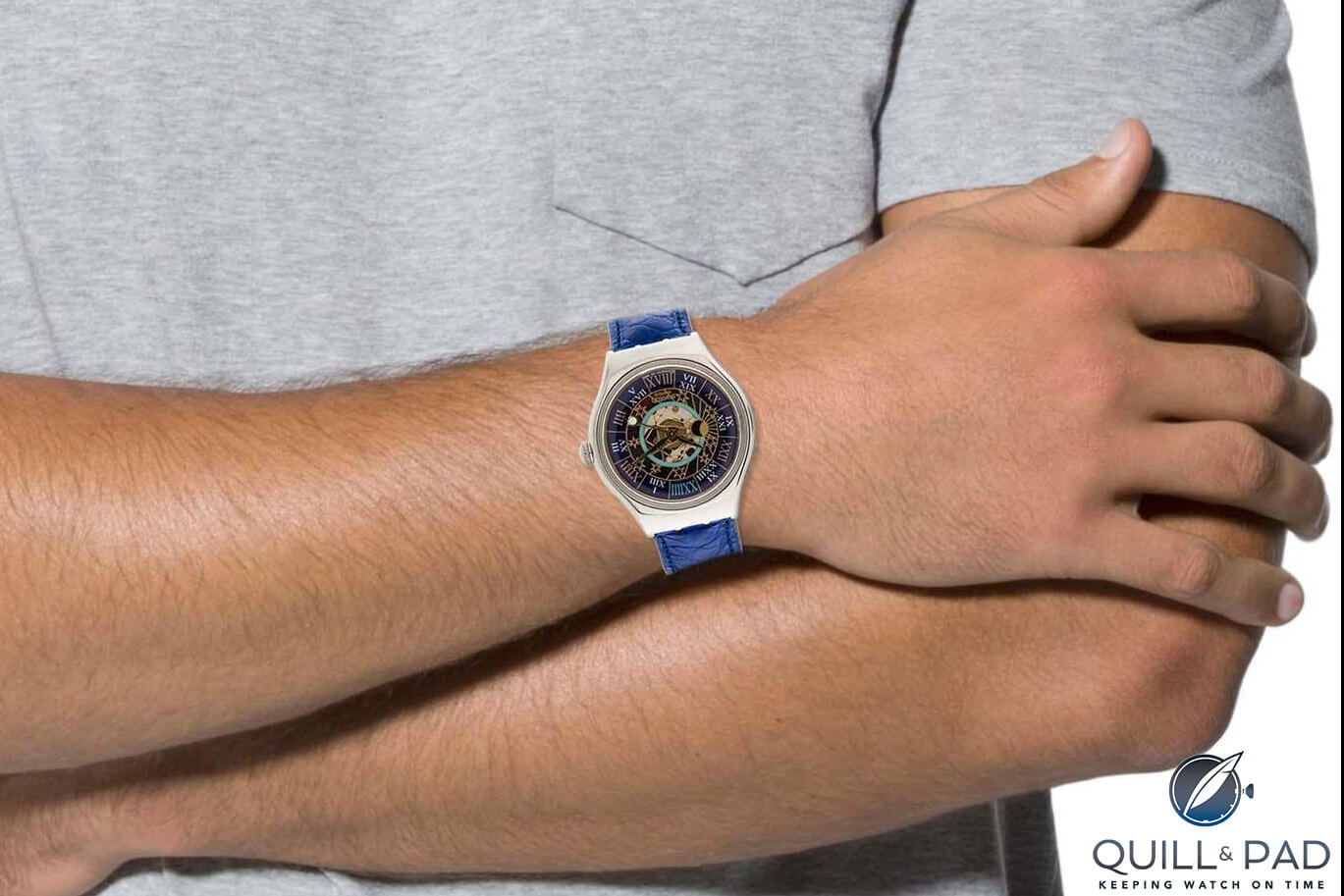
Swatch Trésor Magique in platinum on the wrist
Marketing has turned it into a chicken-and-egg story: platinum is rare so it is supposed to be expensive, and this pricing strategy keeps demand at bay. The only exception to this rule might have been the Trésor Magique, which Swatch launched in 1993. It featured a platinum case fitted with a blue crocodile strap (don’t worry, the traditional plastic strap was included as well) and was part of a limited edition of no less than 12,999 pieces, making it a very expensive Swatch but a very affordable and “common” platinum watch.
Platinum is expensive
The premium most watch brands charge for their platinum-encased watches in relation to their gold-encased watches gives the impression that platinum is far more costly than other metals. It is more rule than exception that a platinum watch is priced 30 to 50 percent higher than the same watch in 18-karat gold.
Take, for example, the IWC Da Vinci Perpetual Calendar, which costs €43.700 in 18-karat red gold, while the watch in platinum, with the same movement, will set you back €59,900.
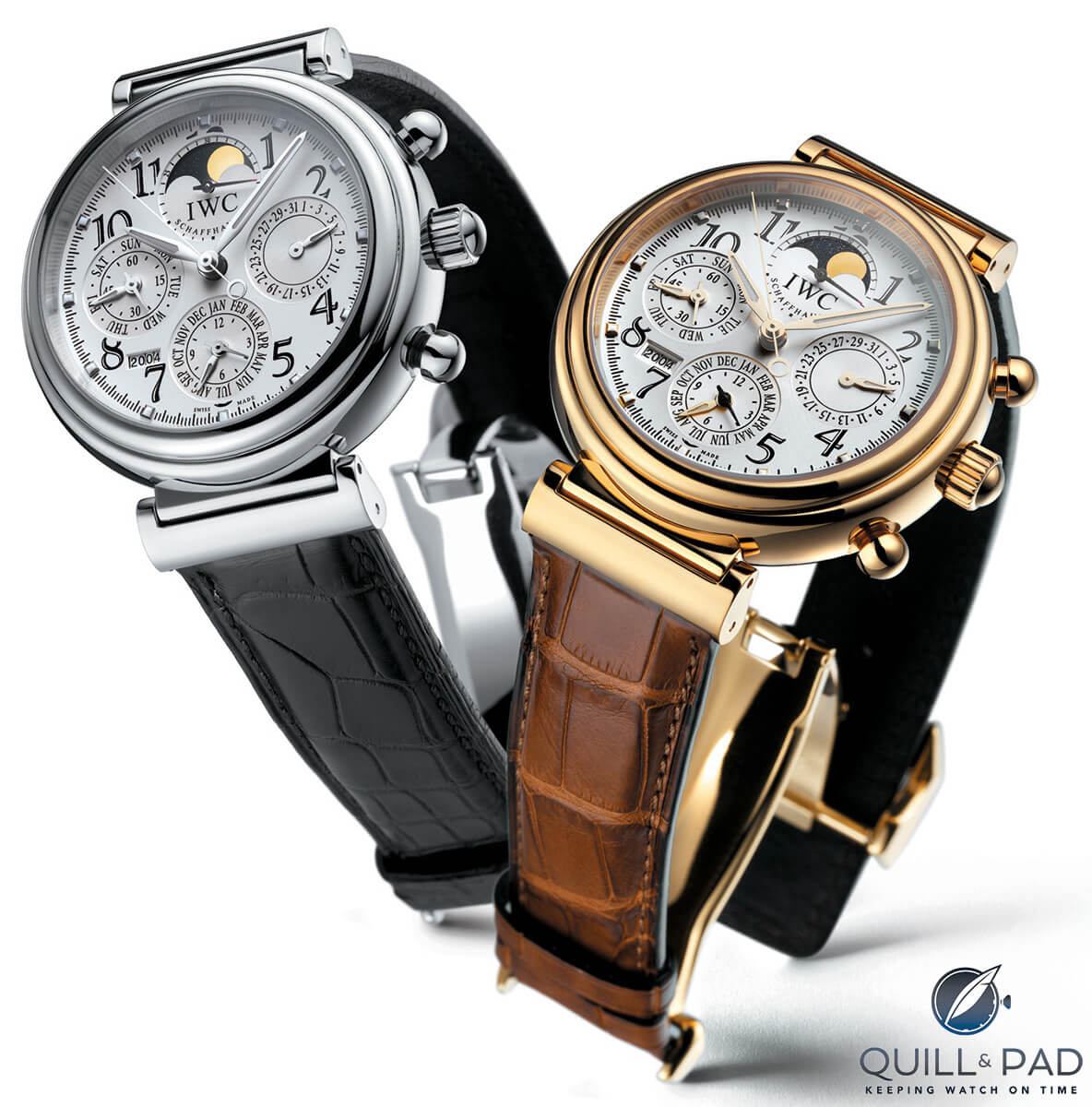
IWC Da Vinci Perpetual Calendar in platinum (left) and red gold
Although the prices of precious metals always fluctuate, platinum and gold are currently almost at the same price level. Of course, you have to take into account that these prices are based on weight, and as platinum is denser than gold you get less of the metal.
However, this is not nearly enough to justify the high premiums you have to pay when you want your watch in a platinum case instead of a gold one.
That is because the expense for platinum is found in something else: while gold is relatively easy to work with, platinum isn’t.
Here the properties of the metal’s hardness and malleability come into play. Platinum is very difficult to form, yet once it is in the desired shape it will hold it much better than 18-karat gold. This is one of the reasons why many jewelers prefer to set diamonds in platinum prongs.
But because it is so difficult to work with, it has its own set of requirements for the craftspeople and the machines.
Platinum is not very resonant
Platinum is often used as a case for minute repeaters. The many myths surrounding platinum go well with the high price tags that naturally accompany minute repeaters. However, the choice of platinum serves more as an extra justification for that price tag and adding additional status to the watch rather then platinum making the minute repeater sound good.
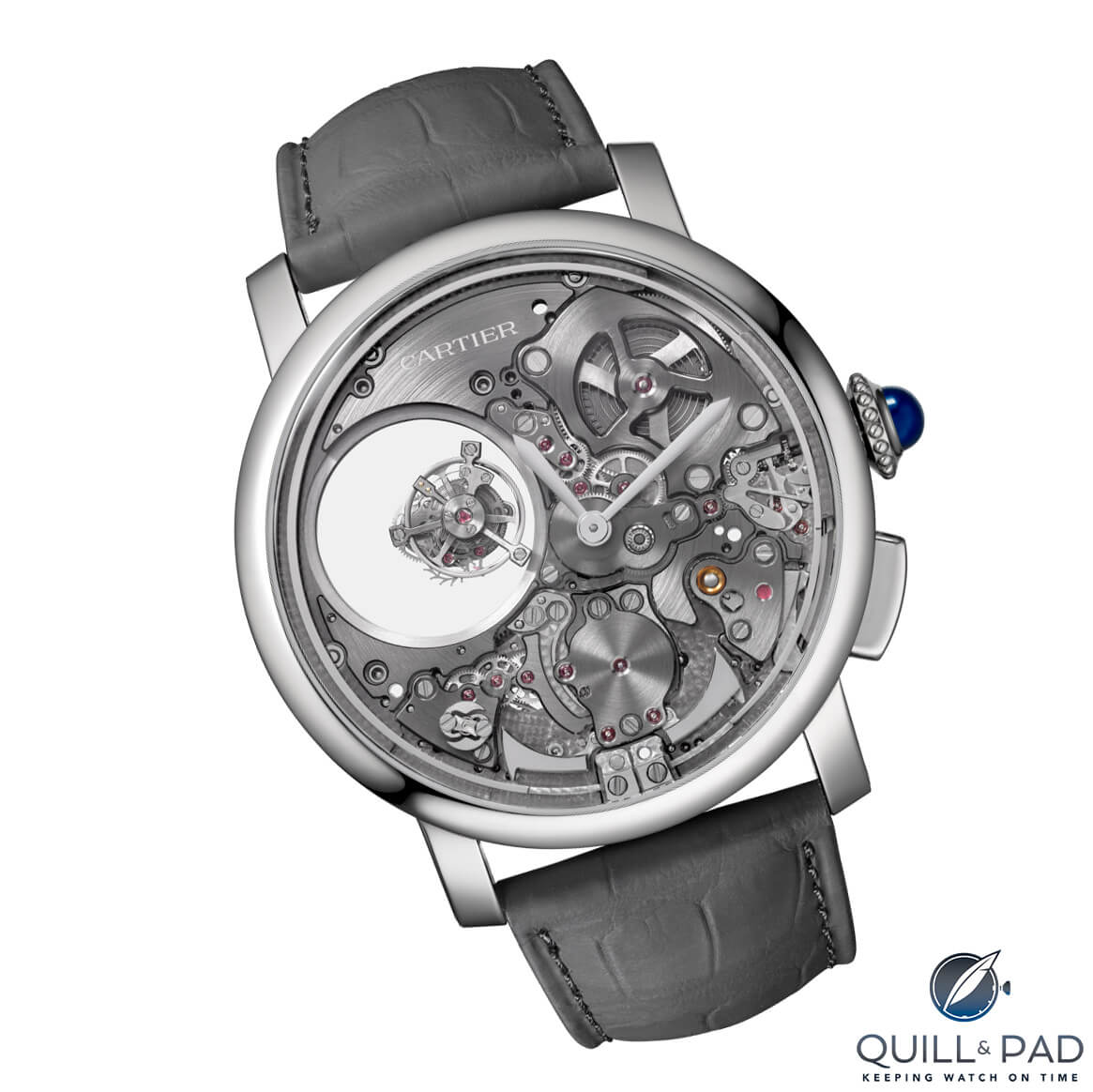
Cartier Rotonde de Cartier Minute Repeater Mysterious Double Tourbillon in titanium
If it was sound that brands were concerned with, they would opt for either titanium or stainless steel – more “common” metals, but ones that carry sound much better.
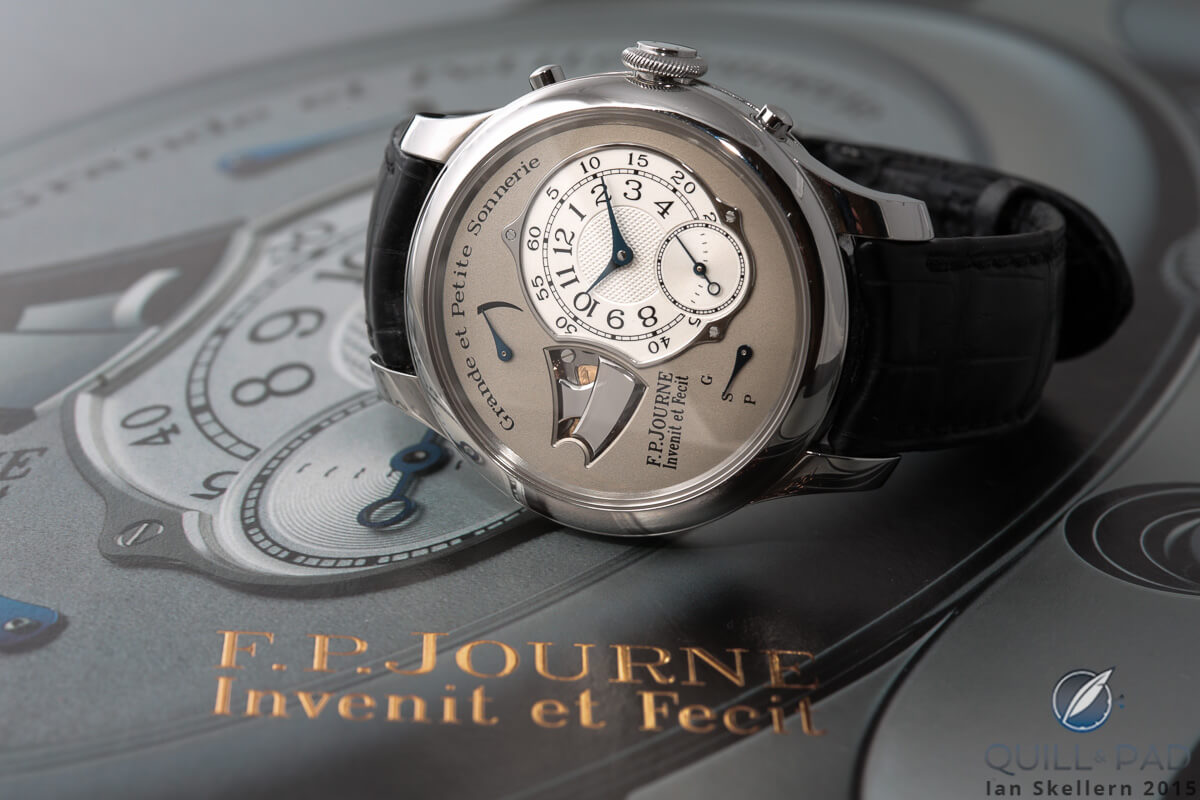
F.P. Journe Sonnerie Souveraine in stainless steel
There are exceptions like the Rotonde de Cartier Minute Repeater Mysterious Double Tourbillon with a case crafted in titanium and François-Paul Journe’s Sonnerie Souveraine, which is encased in stainless steel simply because it sounds better.
So why consider buying a platinum watch?
All the arguments invented by marketing departments as to why you should buy a platinum watch have unfortunately overridden the true reasons why a platinum watch comes with a unique appeal of its own.
In fact, I would dare say that wearing a platinum watch is an experience. Its luster is much softer than that of stainless steel, and it even displays a subtle difference compared to white gold. It is also a very understated material, which for some clients can be an extra appeal while others think it is complete lunacy in relation to its premium price.
Here platinum’s dense structure also comes into play. Especially with larger watches, or those on a platinum bracelet, you can feel the extra weight when you put it on.

Patek Philippe 40th Anniversary Nautilus Date in platinum
While it is just that – extra weight – it does provide a rather rich feeling when wearing such a watch. In comparison to 18-karat gold, platinum is much more durable and loses very little weight when frequently worn.
Platinum bracelets also remain much tighter for longer compared to gold counterparts, and when they need to be polished there is very little loss of material.
This is, however, not something everybody can do as it takes a skilled craftsperson to polish platinum to perfection.
These all quite subtle reasons might not be enough for everybody to justify its premium price, but they are for the owners of platinum watches as well as the brands that sell them.
Platinum continues to maintain its exclusivity, despite the fact that said exclusivity is mainly artificially created by the industry itself.
Quick Facts Swatch Trésor Magique
Case: 36.7 x 11 mm, platinum
Movement: automatic ETA 2840, 21,600 vph / 3 Hz frequency
Functions: hours, minutes, seconds
Limitation: 12,999 pieces
Price: $1,618 (1993)
Quick Facts IWC Da Vinci Perpetual Calendar
Case: 43 x 15.7 mm, platinum
Movement: IWC manufacture Caliber 89360, 68-hour power reserve
Functions: hours, minutes, small seconds; flyback chronograph, perpetual calendar with date, day, month, year indicator, moon phase
Limitation: 100 pieces
Price: €59,900
You might also enjoy: Here’s Why: Stainless Steel Is The Most Precious Metal.
Trackbacks & Pingbacks
-
[…] Debunking The Myths About Platinum | Quill & Pad. […]
Leave a Reply
Want to join the discussion?Feel free to contribute!





















































I was always told the the cost differential relates to fabrication cost: that is, platinum is more more difficult to machine. Cutting instruments often need multiple replacements, etc.. I’m not sure that this cost, nor the multiplier effects of mark-ups, is fully taken into account in your analysis.
One factor not mentioned in the article is that a gold case is typically 18kt gold, meaning 75% of the metal is pure gold. However, platinum case watches are typically 90% in purity. So there is an extra 15% of precious metal just in the composition. Factor in the density (extra weight) and you require far more platinum by weight than you would for a comparable gold case. So there should be at least a 15-20% jump in price just based on raw metal costs assuming that they are priced comparably per gram. In the past, platinum has been twice the price of gold making for a truly expensive difference hence why it used to be regarded in the watch world with such reverence.
Good topic! Thanks for bringing it.
Quick facts about costs:
The threshold for producing Platinum cases is > 12 pieces. This is the point of inflexion of the marginal unitary cost of production (and this is a high number and a high risk for small independant watchmakers). Once you reach that number you can get machining costs not too far from White gold (which is already 20% higher that Rose Gold), and tooling costs (very important when working with Platinum) shall get better amortized than on a lower production number. Yet, once you add the extra cost due to weight density (i am referring to Mr. Oster explanation above), you have to add another cost which is called the COFIPAC and which will in simple terms represent the money paid to the supply chain to get some real Platinum alloy ready to machine while you may simply have bought it as an electronic transaction at your bank. While for Rose gold this cost is low, it can jump to an added cost of 50% on top of the metal cost in the case of Platinum. These 3 factors combined bring the full cost of a Platinum case 50% to 80% above a Rose Gold one… even though the Platinum price per ounce is lower.
So Platinum continues to be a much more difficult and expensive precious metal to craft… But it is not the only exclusive aspect of it: the color in particular as this kind of perfect grey metal tone you wish to get with white gold without achieving it fully (it remains a bit too white)…
It is also a real and exciting challenge to hand engrave it. You can’t engrave it softly, as you would break the burins edges too fast, you need to strongly chisel it to achieve a proper result. Only the best craftsmen and women can achieve it.
And finally the sensation on the wrist is just unique, not only for the weight, above all for the smoothness…
Thank you for calling a cat a cat.
100g of platinum will cost today 3100 usd. Roughly the same as gold. But this was not the case in the past. So there was a logic behind the premium. And this Logic has disappeared. A smaller production number of platinum version helps brands keep a hefty premium. Simply put, platinum.watches are not “the best deal”. They are probably not purchased to be the best deal either. Would i consider platinum four my next watch: berry unlikely because jut is very heavy. I guess slim models would be the only ones that i could consider in that metal, may be.
Great post. I usesd to be checking constantly this blog and I am inspired!
Very usefull info particularly the remaining part 🙂 I handle such information a lot.
I used to be looking for this particular information forr a long time.
Thanhk you aand good luck.